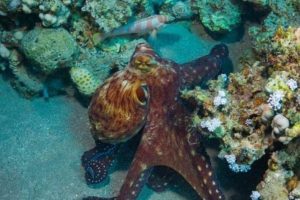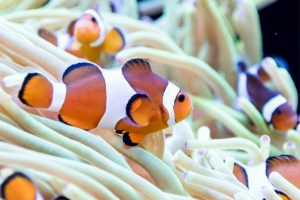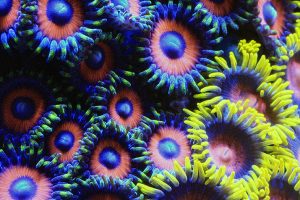AQWA Facts: Sea snake
Family: Elapidae Subfamily: Hydrophiinae
Real reptiles
Sea snakes are ocean reptiles. Like other reptiles, they have scales, breathe air and can’t control their body temperature! Sea snakes also have a forked tongue, no eyelids and no legs.
Life in the sea
Sea snakes’ subfamily name Hydrophiidae means “water lovers”. Sea snakes can stay underwater for up to two hours and dive to depths of 100m! This is thanks to a lung that is nearly as long as their whole body. They have a gland under their tongue that gets rid of extra salt and will shed their skin every 3 weeks – much more often than a land snake. This keeps their body clean enabling sea snakes to absorb some extra oxygen through their skin.
Fangs filled with deadly venom
Packed into the syringe like fangs of a sea snake is venom 2–10 times more powerful than a cobra’s. Sharp, fine teeth grip their food until it can be injected with venom. The venom is powerful and quick-acting to ensure that their prey can’t escape. While venom is used to capture prey it is rarely used in defence.
Big bite
Sea snakes swallow their food whole. To do this, they dislocate their jaws – sliding each jaw sideways while their skin stretches.
Shaped like a boat
To help them move easily through the water sea snakes have; small and narrow scales, a long thin body shaped like the keel of a boat and a flattened, paddle-like tail.
Did you know?
There are over 50 different species of sea snakes in the world and 24 species of these can be found in the warm waters of Western Australia.
Where at AQWA?
Come face to fang with this deadly creature in AQWA’s DANGERZONE!
Fast facts
Size: <270 cm
Diet: Fish, fish eggs
Main predator: Birds, sharks, large fish, eels
Habitat: Shallow water habitats
Found: Indian & Pacific Oceans (mainly Australia and New Guinea)



